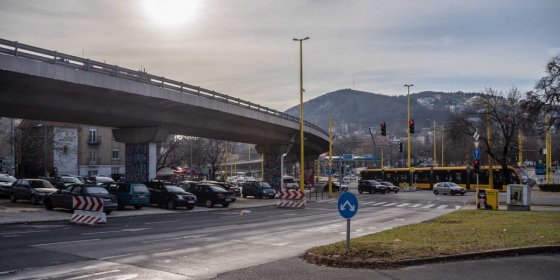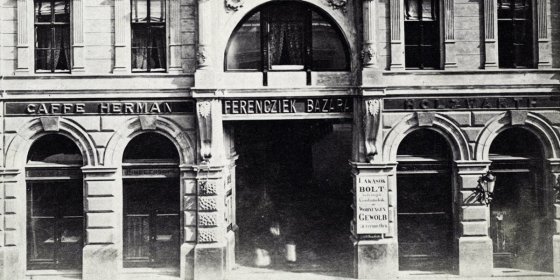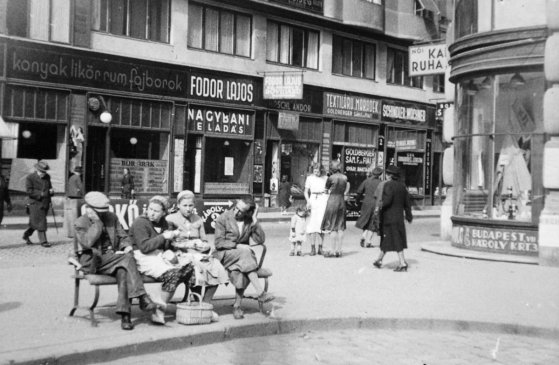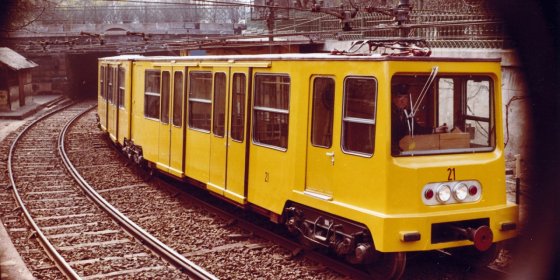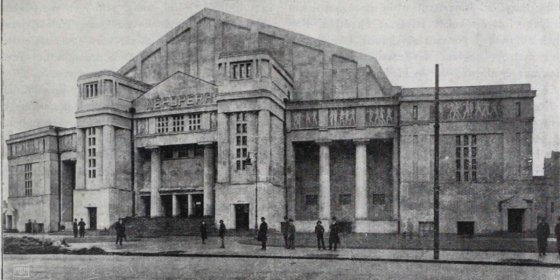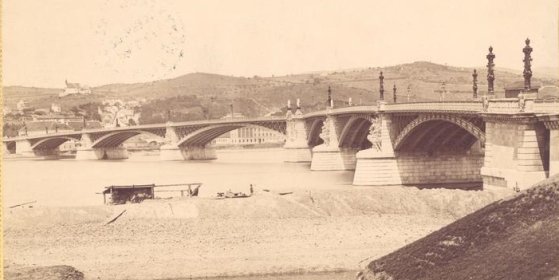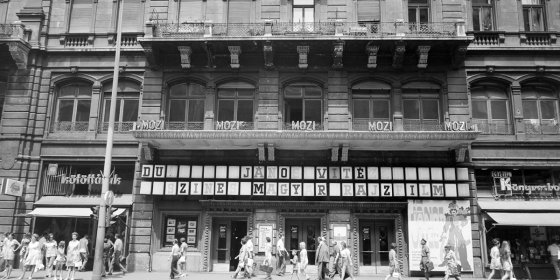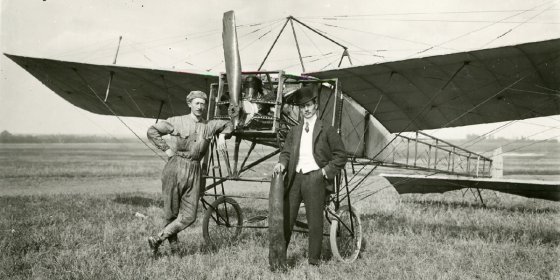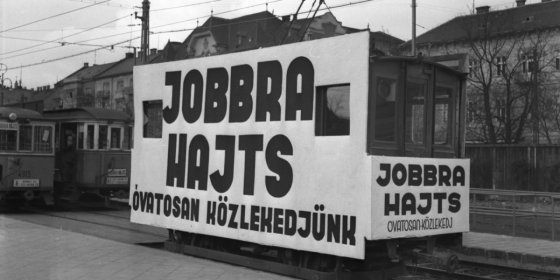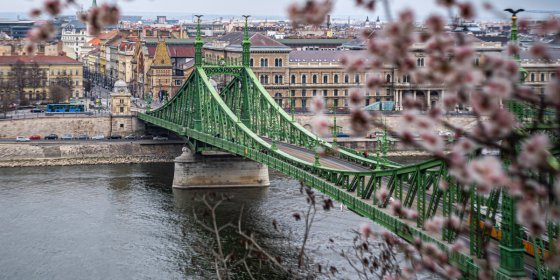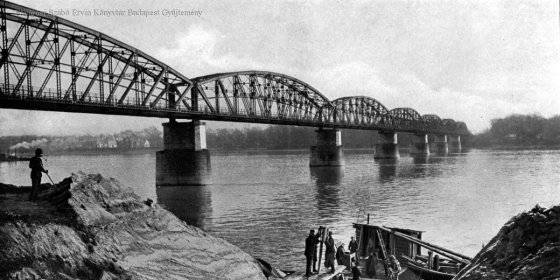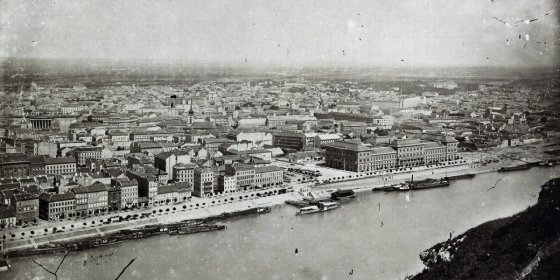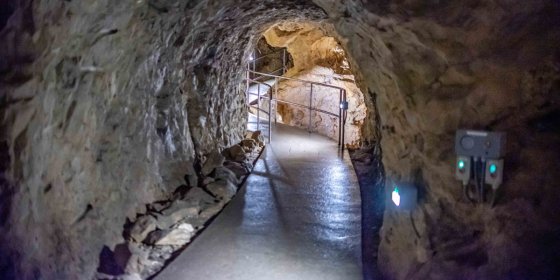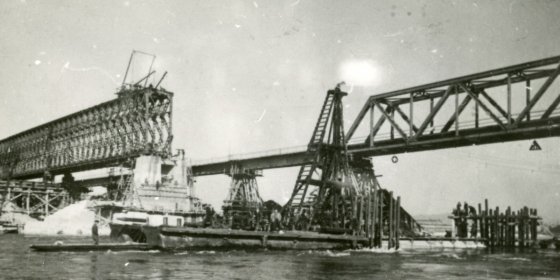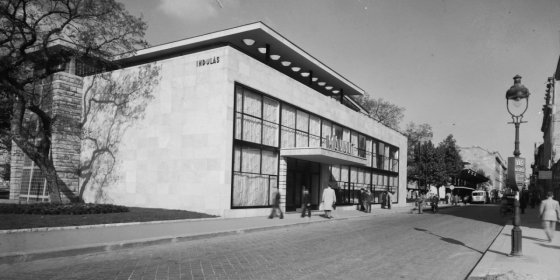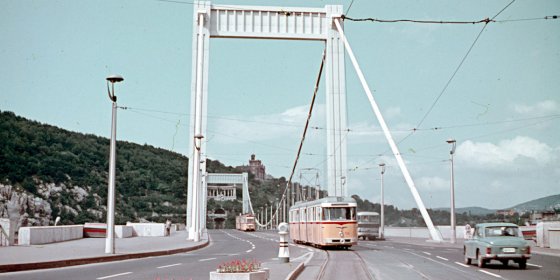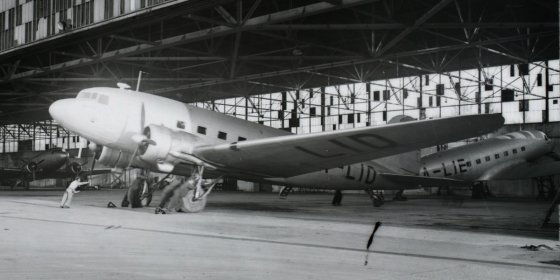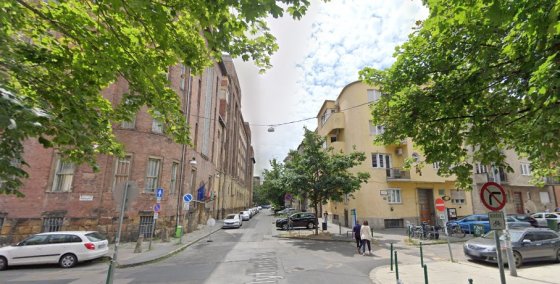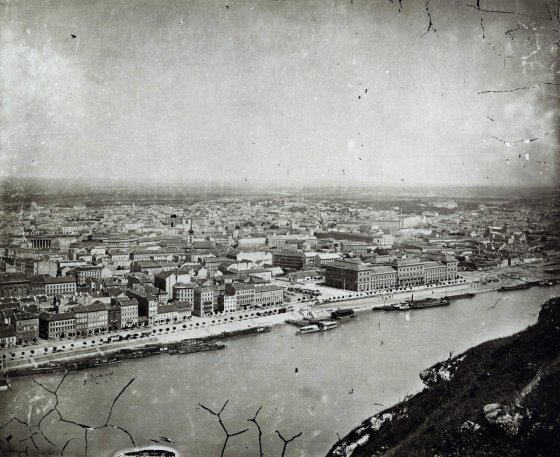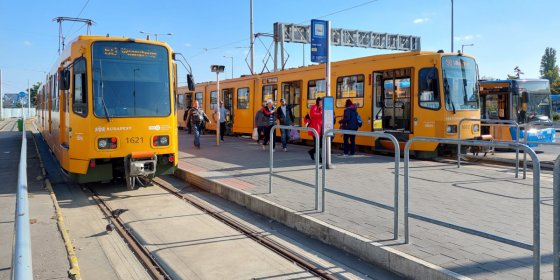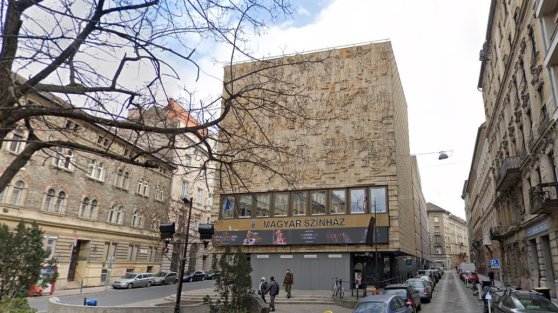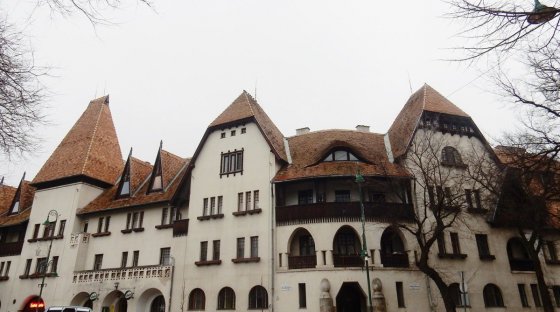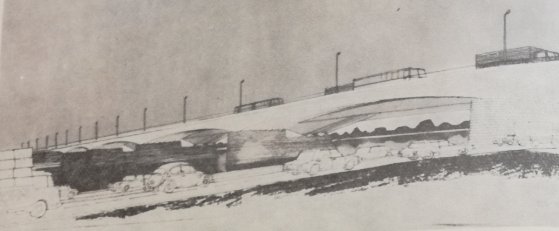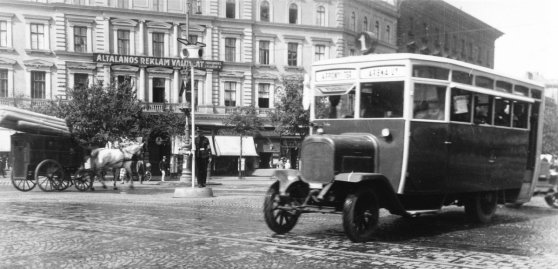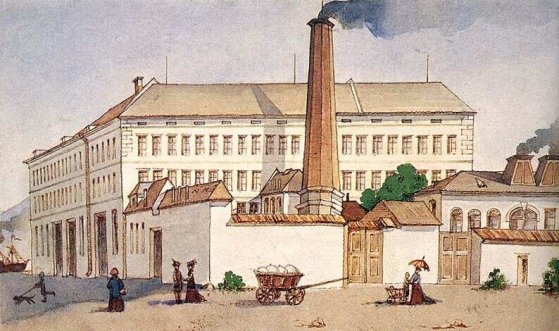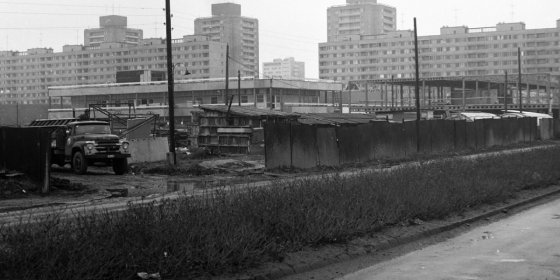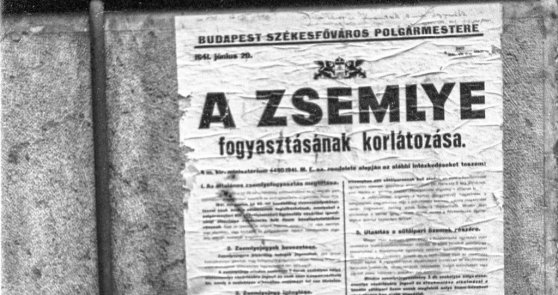 The „intertwined history” of the bridges and the city of Budapest
Which ideas and events have shaped the fate of bridges of Budapest and the cityscape? Alongside many other interesting facts, this question is also answered this newly published book by the Budapest City Archives, which introduces the history of bridges in Budapest.
The „intertwined history” of the bridges and the city of Budapest
Which ideas and events have shaped the fate of bridges of Budapest and the cityscape? Alongside many other interesting facts, this question is also answered this newly published book by the Budapest City Archives, which introduces the history of bridges in Budapest.
Csaba Domonkos
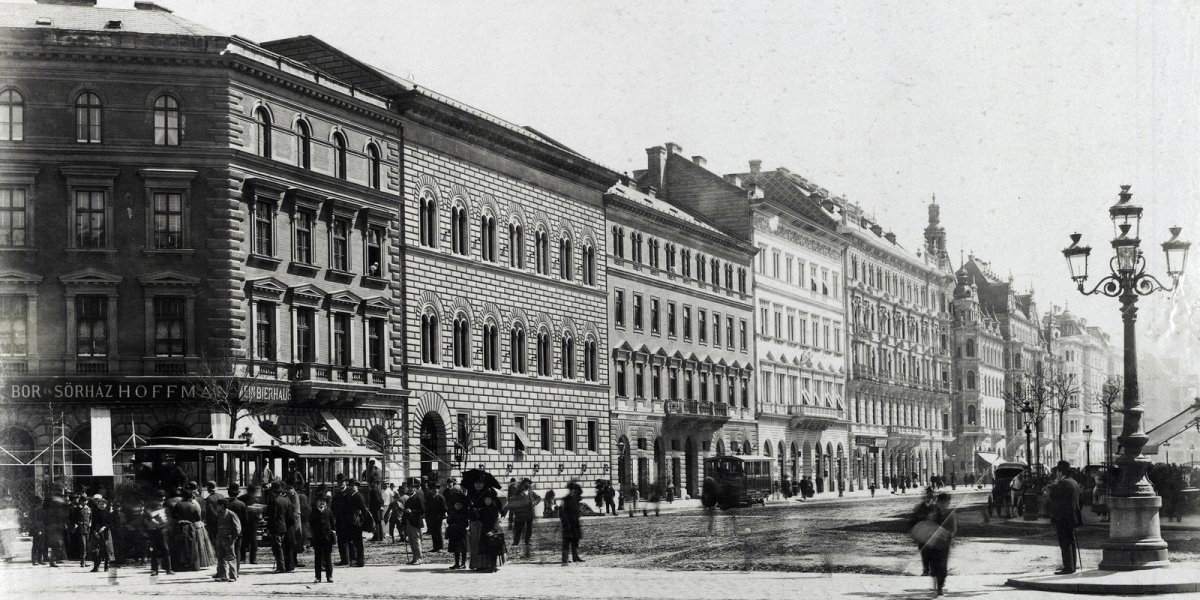 The first gas lamps in Pest were lit 165 years ago
The first gas lamps in Pest were lit 165 years ago
December 23, 2021 at 10:00 AM
At night in Budapest, thousands of gas lamps once provided light, which had to be lit one by one by the lamplighters every night and then extinguished at dawn. The gas lamps lived their heyday in the second half of the 19th century, the first street gas flames in Pest were lit on today's Rákóczi Road 165 years ago.
Residential buildings were also demolished due to the construction of the 45-year-old BAH junction overpass
December 20, 2021 at 9:00 AM
The 660-meter overpass above the BAH junction plays an indispensable role in the traffic of Budapest, as it is actually the gateway to Lake Balaton. The huge bridge was built 45 years ago, and since then tens of millions of people have crossed it to reach Lake Balaton or the Adriatic. However, the construction also came at a price: a total of 73 flats disappeared due to it, and the old customs house was also demolished.
Disaster tourists in the 19th century - Crowds gathered to the cry of unfortunate construction workers in Ferenciek Square
December 18, 2021 at 10:30 AM
After the unification of the city, construction works in Budapest started at a dizzying pace, huge, multi-storey houses were erected in a few months, but accidents on construction sites were rare. One of these happened during the construction of the Ferenciek Bazaar, when a falling wall buried eight workers. At the wailing of the injured, the people of Pest flooded the area in no time. Our reminiscent article gives an insight into how the authorities dealt with construction accidents in the 19th century.
Erzsébetváros was the poorest and smallest district but it wanted to take the name of the Queen
December 16, 2021 at 3:00 PM
The 7th District is a relatively young part of the city, it was separated from Terézváros in 1873, because that was found to be too large and too populous. The new district thus created became the smallest part of Budapest, but at that time it did not have its own name. However, the leadership of the district, which began to develop vigorously in the second half of the 19th century, believed that identity requires a name, so in December 1881, they asked the royal couple to let the district take the name of Queen Elizabeth.
The first new train of the Millennium Underground was unveiled 50 years ago
December 13, 2021 at 9:00 AM
Today's Millennium Underground vehicles have appeared in Budapest's tram lines 50 years ago. Yes, on the surface, because the first prototypes were tested on tram lines. Why were new vehicles needed 50 years ago and how were they made?
Erkel Theatre is 110 years old - The largest theatre in the country was originally opened as people's opera
December 7, 2021 at 9:00 AM
The Erkel Theatre was People's Opera, City Theatre, a variety show and the House of Hungarian Culture, later a cinema and then a scene of the Opera House. Its original façade and interiors have been rebuilt over time, and in 110 years, just one thing hasn't changed: it is still the largest permanent stone theatre in the country.
A French bridge in Budapest - The Paris engineer submitted the plans for the Margit Bridge 150 years ago
December 1, 2021 at 10:00 AM
The designer and contractor were sought for the Margit Bridge in an international design competition. There was a lot of discussion about the location of the bridge, as the second bridge of Budapest, which was still waiting to be united at the time, was imagined by many people elsewhere, in the southern part of the city. The tender was won by a French engineer who also built the bridge, which was very similar to the way we know Margit Bridge today.
The Fórum film theatre, the forerunner of Puskin cinema, opened 95 years ago
November 25, 2021 at 10:00 AM
The building, which houses the Puskin Cinema and was built in 1895 according to the plans of Czigler Győző, has had a cinema in it since 1926, before which the Magyar Világ Café was located on the ground floor of the building. An audio film was first screened in Hungary at the former Fórum film theatre in 1929, although this was almost thwarted by a patent lawsuit.
The artists' colony on Százados Road was built on the outskirts of the city 110 years ago, today it is an integral part of Józsefváros
November 15, 2021 at 1:00 PM
A special and closed world bordered by a fence where artists live and create. That's how it has been for110 years. With the support of Mayor István Bárczy, the country's first artists' colony was built on Százados Road in 1911 from the budget of the capital, with fifteen one-storey houses and 28 studios. From the beginning, renowned artists created here, including Ferenc Medgyessy, Zsigmond Kisfaludi Strobl, Bertalan Pór, Dezső Czigány. The area, which was still a suburb at the time of its handover, is now an integral part of Józsefváros.
The first Hungarian flew over Budapest 110 years ago
November 12, 2021 at 9:00 AM
One of the most colourful personalities in the heroic age of aviation was Guido Prodam. The adventurous pilot learned to fly in Rákosmező, and he was the first Hungarian to fly over the Budapest downtown 110 years ago. During his journey, he flew along the Danube, he also flew above the Chain Bridge, the Buda Castle and the Technical University.
Right-hand traffic was introduced in Hungary 80 years ago
November 10, 2021 at 9:00 AM
In much of the world today, cars are on the right side of the road, and on the European mainland, this is the traffic regulation, wherever we go. However, this was not always the case: the right-hand drive in Hungary only became common 80 years ago, in November 1941, as one of the last countries on the European continent. However, several transport vehicle still operated according to the original order, the change in the Kisföldalatti [the small underground railway] only took place in 1973.
Without whom the Liberty Bridge would not be the same: Virgil Nagy, the master builder of metal, died a hundred years ago
November 8, 2021 at 6:30 PM
Virgil Nagy, who designed the structures that fundamentally define the view of Budapest, passed away 100 years ago, the architectural design of the Liberty Bridge and the aesthetic appearance of the old Elizabeth Bridg , which was blown up in 1945, are his works.
A forgotten enormous railway bridge - Built for the Millennium, destroyed by war
November 7, 2021 at 10:30 AM
The Újpest Railway Bridge is a stepchild among the bridges in Budapest because it does not even have a regular name. There is almost no mention of it, even though trains have been running here for 125 years, and it plays an important role in traffic around Budapest. Pestbuda now remembers the birth of the first structure, which was built in 1896 for the millennium but was destroyed in World War II.
"Budapest should be made a metropolis" - 150 years ago, the large-scale constructions in the capital were announced
November 4, 2021 at 10:30 AM
The transformation of the Hungarian capital into a metropolis was formulated before the unification of Pest and Buda, when in 1871 a tender was issued for the preparation of a regulatory plan that would provide a framework for the planned large-scale constructions. The tender, which closed 150 years ago, received a number of proposals that contributed to the development of the currently known structure and cityscape of the capital.
Miracle under Buda - The Szemlő-hegyi Cave can be visited for 35 years
November 1, 2021 at 2:00 PM
Although the Szemlő-hegyi Cave has been discovered for more than 90 years, it has only been open to the public for 35 years. This is one of the most beautiful and interesting underground attractions in the capital, which is a great recognition, as there are several cave specialities below Budapest.
Intended to be temporary, the structure of the Connecting Railway Bridge built after the war served Budapest until 2008
October 29, 2021 at 10:00 AM
At the end of World War II, a permanent railway bridge over the Danube was rebuilt at record speed. One and a half years after the weapons were silenced in the country, and exactly 22 months after the bridge was blown up, the semi-permanent structure of the Connecting Railway Bridge was already standing, weighing half as much as the Chain Bridge which is much longer than this. Although it was demolished a few years later from its original location, it moved to Újpest, where it served traffic until recently.
The Erzsébet Square bus terminus in the middle of the city centre had been closed for 20 years
October 19, 2021 at 10:30 AM
The Erzsébet Square bus station has not departed and accepted buses for twenty years now. For much of the 20th century, it was still natural for buses to depart from central spaces that were easily accessible to all, but due to changes in urban development considerations, bus stations were pretty slowly pushed out of the inner city core. The Erzsébet Square bus station in the 5th District was also closed down.
The roaring Bengali - The first articulated trams were not a success in Budapest
October 17, 2021 at 9:00 AM
By the end of the 1950s, the existing trams in Budapest proved to be increasingly too small, so a new, more accommodating, articulated tram was built by Hungarian engineers, the Bengali. The recipe was simple, the type was spacious and shapely, yet the first articulated trams that appeared in Budapest were not clearly successful.
The first post-war domestic flight departed from Budapest 75 years ago
October 15, 2021 at 9:00 AM
Reconstruction after World War II also extended to transport networks. On the one hand, the railway also suffered from the war, and on the other hand, the existing capacities were tied up in the reconstruction, so part of the passenger transport was solved by planes. Domestic flights were launched on 15 October 1946 by Malév's predecessor, the Maszovlet company, and the first two planes could travel from Budapest to Debrecen and Szombathely.
Gyorskocsi Street in Buda preserves the name of a special means of transport
October 13, 2021 at 10:00 AM
Gyorskocsi Street in Buda preserves the history of the means of transport used in the 18th-19th century, before the spread of the railway, which made it possible to get from Buda to Vienna and back in the shortest time. But what was that particular gyorskocsi [diligence or stagecoach] like, who travelled by it, and how long did the trip take? You can read about that here.
When cyclists were also taxed in Budapest
October 9, 2021 at 11:00 AM
Budapest found itself in a difficult financial situation 115 years ago. Although cyclists and dog keeping were already taxed, water fees and tuition fees were raised, in 1906 it became clear that this was not enough to overcome the huge budget deficit. The government did not approve the planned additional tax burdens (such as the champagne tax and the card tax) and the new tax increases, but provided budget support to settle the capital's debt.
Miracle in green: Liberty Bridge, one of the most beautiful ornaments of Budapest, is 125 years old
October 4, 2021 at 9:00 AM
Liberty Bridge is 125 years old. Budapest's shortest Danube bridge hides many interesting things. At the time of its handover, in the year of the millennium, Franz Joseph hammered the last silver rivet in, its colour has been blue and gray in addition to green, they wanted to demolish it once, and at its renovation before the regime change they placed back the historical Hungarian coat of arms cunningly.
Trams from Hanover have been operating in Budapest for 20 years
October 2, 2021 at 4:00 PM
After a long time in the rich tram park of Budapest, the first vehicles manufactured in Western Europe were the trams from Hanover with their characteristic opening staircases, which were put into traffic for the first time on 3 October 2001.
The National Theatre operated in Hevesi Sándor Square for 34 years
October 1, 2021 at 12:30 PM
When the old building of the National Theatre on Blaha Lujza Square was blown up on 15 March 1965, no one would have thought the institution would operate in a temporary location for three and a half decades. The National Theatre held its opening performance on 1 October 1966, in the building of the former Hungarian Theatre on Hevesi Sándor Square, and until 2000, it was the home of the company.
Wekerletelep in Kispest also preserves the memory of the prime minister who passed away a hundred years ago
September 26, 2021 at 9:30 AM
Wekerletelep with its special atmosphere is located in Kispest. Its smaller and larger houses form this fairytale-looking part of the city in a uniform style, arranged in streets that are inexplicable for an outsider, but are in a regular order. Its creation was initiated by Sándor Wekerle, one of the most prominent Hungarian prime ministers, who passed away a hundred years ago.
Fifty years ago, a highway bridge was designed on the edge of the inner city
September 25, 2021 at 10:00 AM
Increasing car traffic has been a problem in the capital for decades. It even come up in the early 1970s that a a huge highway bridge should be built on the Danube in the Lágymányos area. If that planned bridge had been realized, we would be living in a different Budapest today.
A hundred years ago, bus traffic in Budapest resumed
September 23, 2021 at 10:00 AM
In Budapest, after the First World War, bus traffic did not start again until 1921. One hundred years ago, electric vehicles first transported passangers between the Aréna, i.e. today’s Dózsa György Road and Apponyi Square, today's Ferenciek Square. Although many considered the racing vehicles to be a luxury, in the end bus transport gained a raison d’être in the capital.
The first steam mill in Pest started significant industrial development - the József Rolling Mill started operating 180 years ago
September 22, 2021 at 9:00 AM
Today it is difficult to imagine, but once the first steam mill in Pest was built and operated in Lipótváros, in the area bordered by today's Bálint Balassi - Béla Stollár - Falk Miksa and Balaton Streets, which started operating on 22 September 1841. However, the József Hengermalom [Rolling Mill] was more than a simple mill. The modern plant established on the initiative of István Széchenyi was not financially successful, but as a result the milling industry and the machine industry also started to develop significantly. Pest in the second half of the 19th century became a major power of the milling industry.
A new department store can replace the more than 40-year-old service house in Kelenföld
September 13, 2021 at 9:00 AM
In the early 1970s, people living in a housing estate in Kelenföld often complained about the lack of services, and in the second half of the decade, a service house was built to remedy this. It had almost everything needed on the two levels. The now obsolete building on the corner of Tétényi Road - Etele Road is now being sold by the municipalities of the capital and the 11th District, and a service house would be built again on the site.
Bread and flour stamps were introduced 80 years ago in Budapest
September 9, 2021 at 10:00 AM
Although Budapest was seemingly peaceful in 1941, the effects of the war were already being felt. Meat consumption and the use of cars were restricted. Sugar and fat could only be bought on ration stamps from 1940, and 80 years ago, flour and bread stamps were introduced. This restriction affected Budapest and the surrounding area in September 1941.
More articles
 The „intertwined history” of the bridges and the city of Budapest
Which ideas and events have shaped the fate of bridges of Budapest and the cityscape? Alongside many other interesting facts, this question is also answered this newly published book by the Budapest City Archives, which introduces the history of bridges in Budapest.
The „intertwined history” of the bridges and the city of Budapest
Which ideas and events have shaped the fate of bridges of Budapest and the cityscape? Alongside many other interesting facts, this question is also answered this newly published book by the Budapest City Archives, which introduces the history of bridges in Budapest.
 The Bridge Report, which brought a turning point in the history of Budapest
A travel report that changed the history of Pest and Buda, as well as Hungary. The little book contributed to the change of half a thousand years of legal customs and the implementation of an investment of unprecedented size and technical quality. This book was The Bridge Report [Hídjelentés in Hungarian].
The Bridge Report, which brought a turning point in the history of Budapest
A travel report that changed the history of Pest and Buda, as well as Hungary. The little book contributed to the change of half a thousand years of legal customs and the implementation of an investment of unprecedented size and technical quality. This book was The Bridge Report [Hídjelentés in Hungarian].
 Drama on the university wall - The heroic monument was planned 95 years ago
In the constant hustle and bustle of the Egyetem Square in Pest, the students may not even notice the monument that decorates the short section of wall between the church and the central building of ELTE. However, it commemorates their predecessors, the heroes who fought for their country in World War I, and those who heroically helped them. The first design of the dramatically collapsing soldier was born in 1928, ninety-five years ago.
Drama on the university wall - The heroic monument was planned 95 years ago
In the constant hustle and bustle of the Egyetem Square in Pest, the students may not even notice the monument that decorates the short section of wall between the church and the central building of ELTE. However, it commemorates their predecessors, the heroes who fought for their country in World War I, and those who heroically helped them. The first design of the dramatically collapsing soldier was born in 1928, ninety-five years ago.

